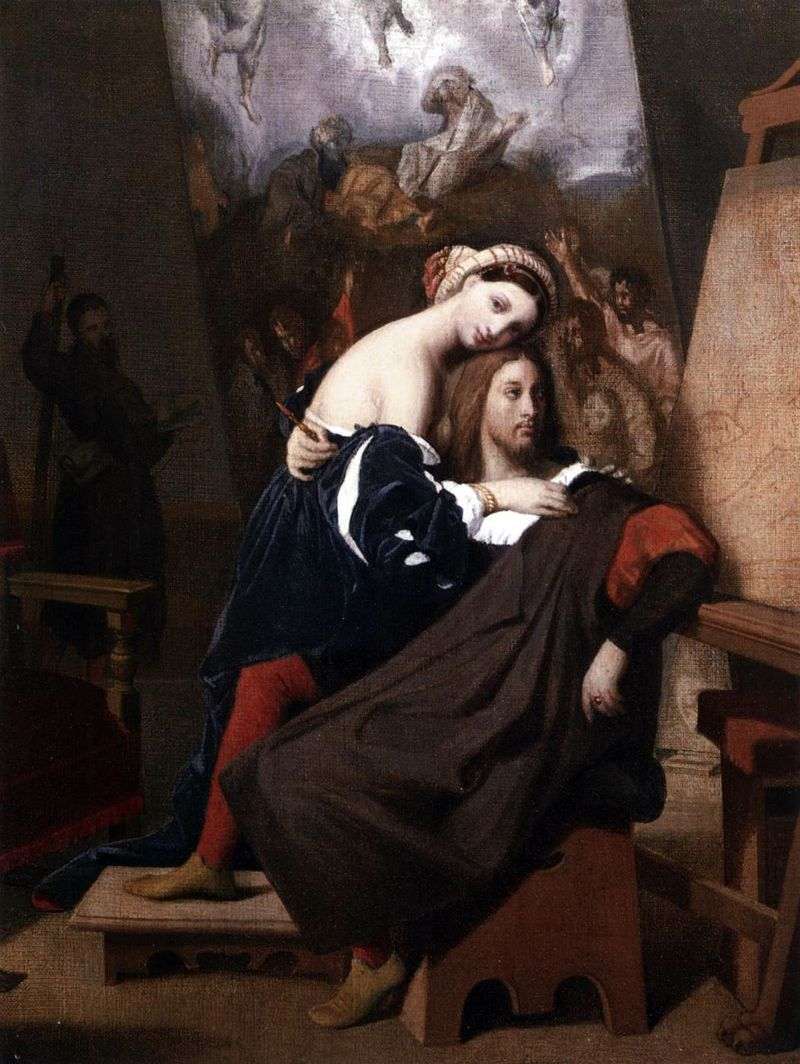
Portrait of Raphael Santi and Fornarina, the beloved of the eminent artist – a piece of Santi’s biography, obsessed with feelings for the same Fornarina, which later broke his heart, was written by the French painter and graphic artist Jean Auguste Dominique Ingres in 1814. The birth of the work coincided with the tragic losses of the close people of the artist – the first-born and father. However, the canvases of that period were in no way different from the others, as if the author did not feel any grief at all. On the contrary, they radiated warmth and good humor, like the creation presented here “Raphael and Fornarina”. The work was written when Jean came to fame and demand, when he was known as a fashionable portraitist and had already developed his own style of writing canvases.
The theme of this work seems to be an unusual one – the artist’s image of a painter’s predecessor, no less talented and unhappy. Love for Fornarina, a simple girl, the daughter of a baker, the Creator’s Muse, through the years became unrequited, but there was a place to be the theme of many of Raphael’s paintings. However, Ingres preferred the disappointment in the relationship between Musa and the artist to capture the sweet moments of mutual and trembling relations. This is the workshop of Raphael, filled with light and warmth of daytime. Easel still holds a canvas on the stand with an outline of Margarita’s portrait, and Santi’s gaze is turned to his plane.
The girl is sweet, luxuriously dressed and fresh. Her skin speaks of excellent health and cleanliness. Rafael is young and in love. His embraces, like branches braiding the camp of Margarita, and she, on the contrary, with a certain poseur grinning in the footsteps of the viewer. He and she are too different, too opposite in status, and in relation to each other. And Ingres, as closely as possible, wove together the couple, preferring warmth, rather than the cold of disappointment. Raphael, perhaps already knew about the secret meetings of Farnarina with her patron-banker Kigi and students of Santi himself. But everything is still good and smooth.
The technique of the letter of Jean Auguste is impeccable. It gives a jelly-like luster and a flat surface without dashes of small strokes. As always, the artist enlarged the details, giving preference to their “whole”, rather than fragmentation into small passages. There are no superfluous characters and accents. This is understandable, it is readable and open, as in the palm of your hand. Dark spots of clothing favorably contrast with the interior, visually throwing the main thing to the fore.
Although both the long-range plan and the first do not differ in color, the work perfectly shows the skill of work with a shade and semitones, the temperature of the paint. “Raphael and Fornarina” – a canvas early period of creativity Engra, it still hides echoes of letters of Nazareth and quattrocento, but already has its own “face” of the author, a fan of classicism and academicism in painting.
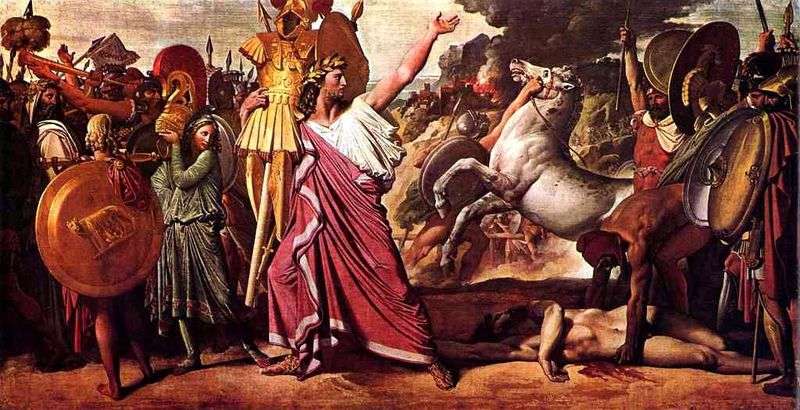 Romulus by the winner of Akron – Jean Auguste Dominique Ingres
Romulus by the winner of Akron – Jean Auguste Dominique Ingres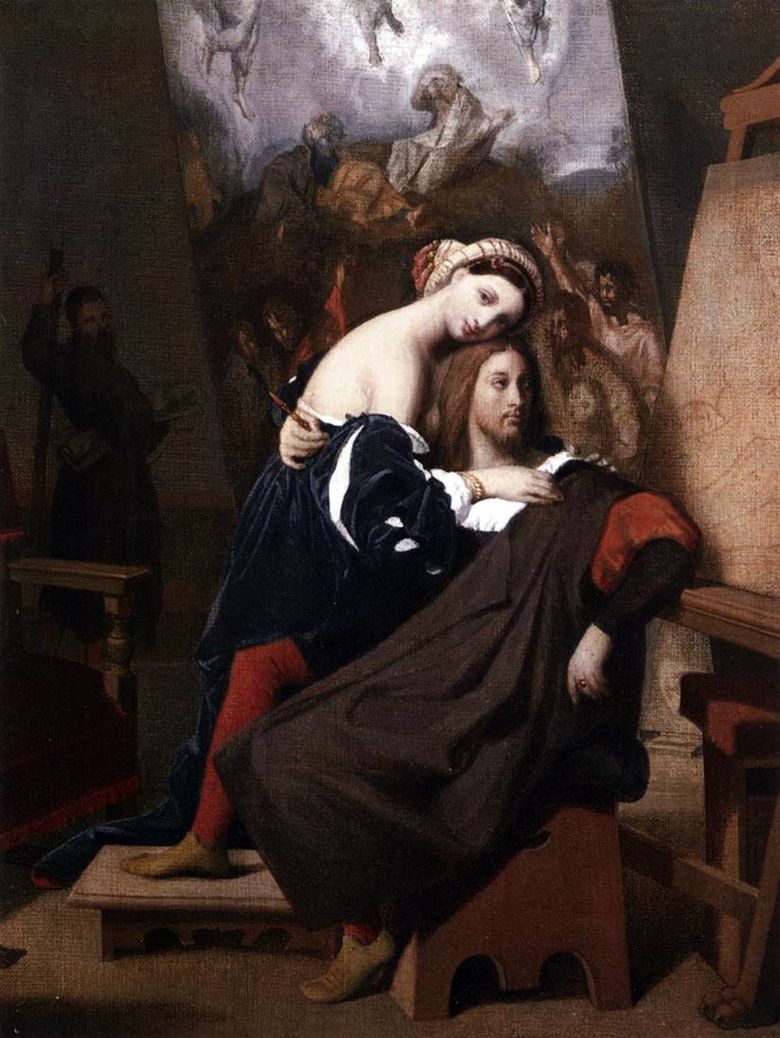 Raphael et Fornarina – Jean Auguste Dominic Ingres
Raphael et Fornarina – Jean Auguste Dominic Ingres Mademoiselle Caroline Riviere by Jean Auguste Dominique Ingres
Mademoiselle Caroline Riviere by Jean Auguste Dominique Ingres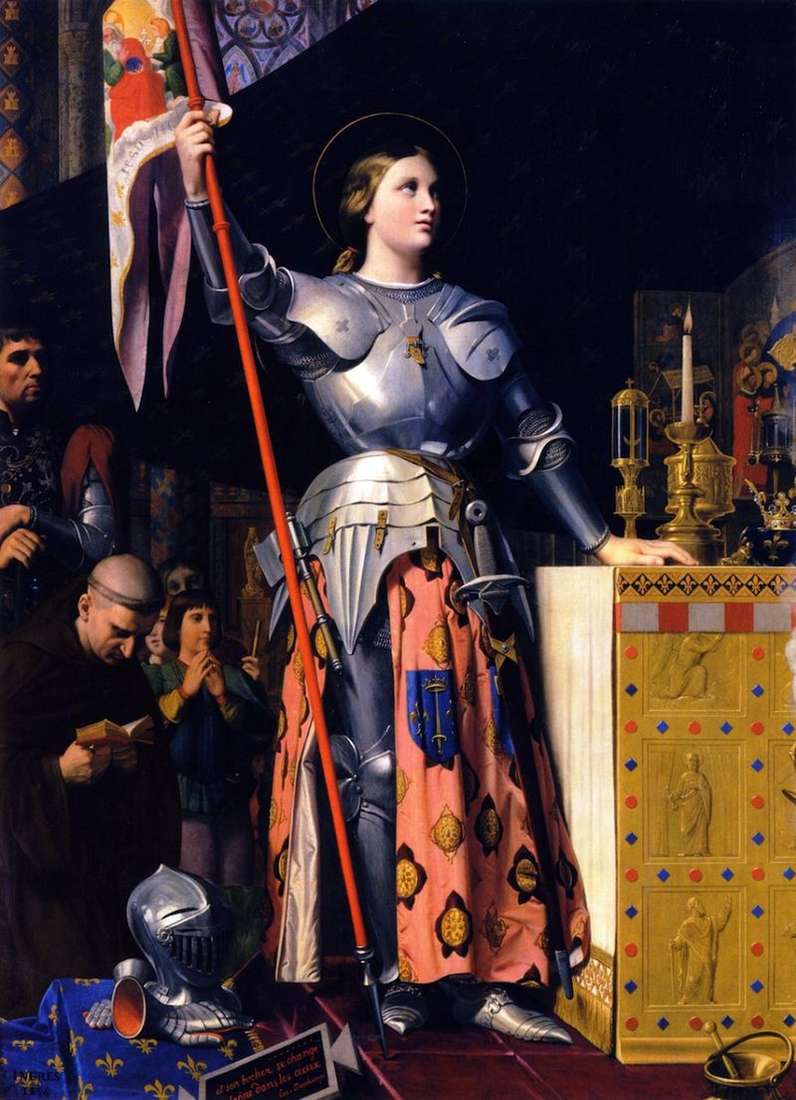 Joan of Arc on the coronation of Charles VII by Jean Auguste Dominique Ingres
Joan of Arc on the coronation of Charles VII by Jean Auguste Dominique Ingres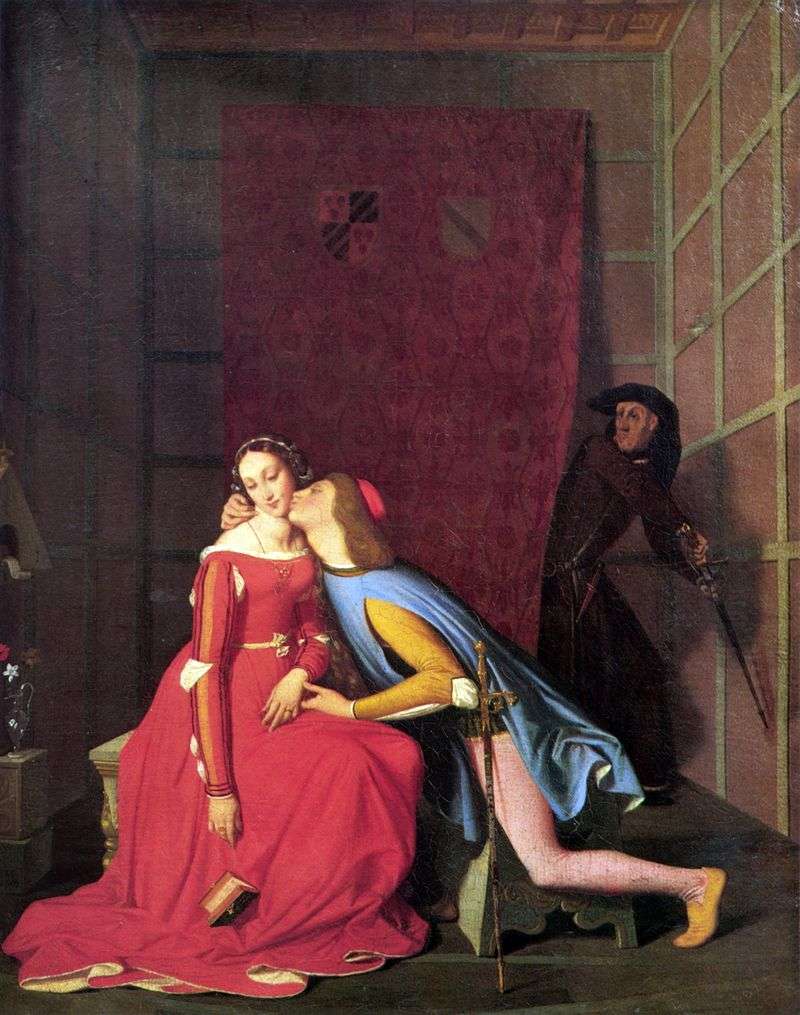 Gianchotto overtakes Paolo and Francesca by Jean Auguste Dominique Ingres
Gianchotto overtakes Paolo and Francesca by Jean Auguste Dominique Ingres The Virgin in the Blue Veil by Jean Auguste Dominique Ingres
The Virgin in the Blue Veil by Jean Auguste Dominique Ingres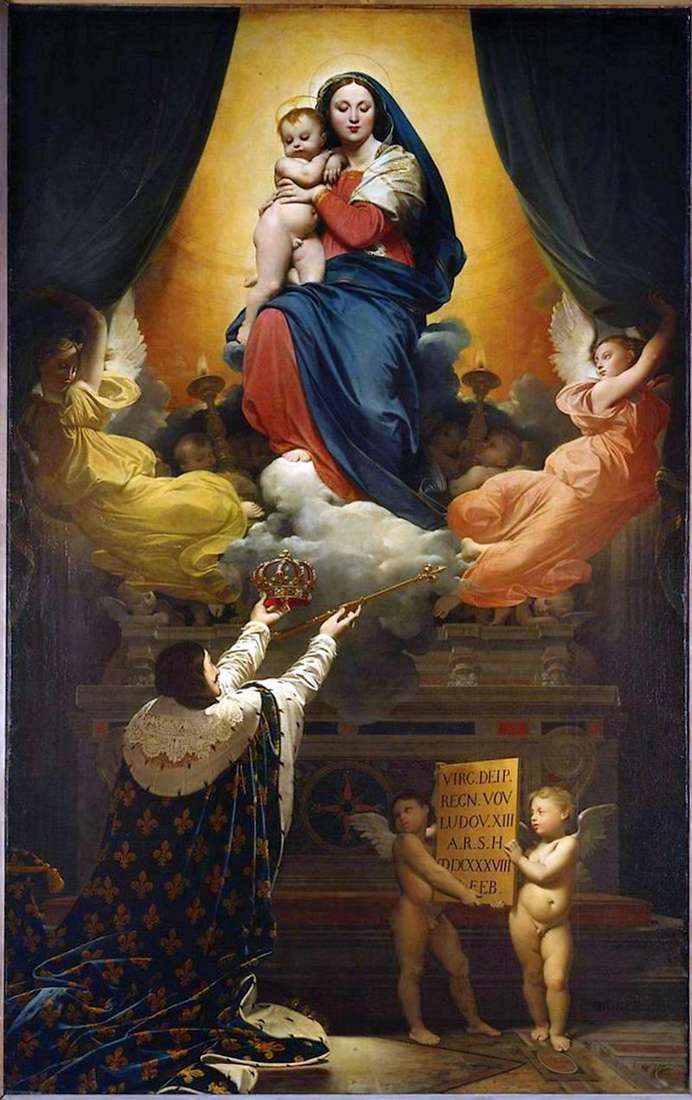 Vow of Louis XIII by Jean Auguste Dominique Ingres
Vow of Louis XIII by Jean Auguste Dominique Ingres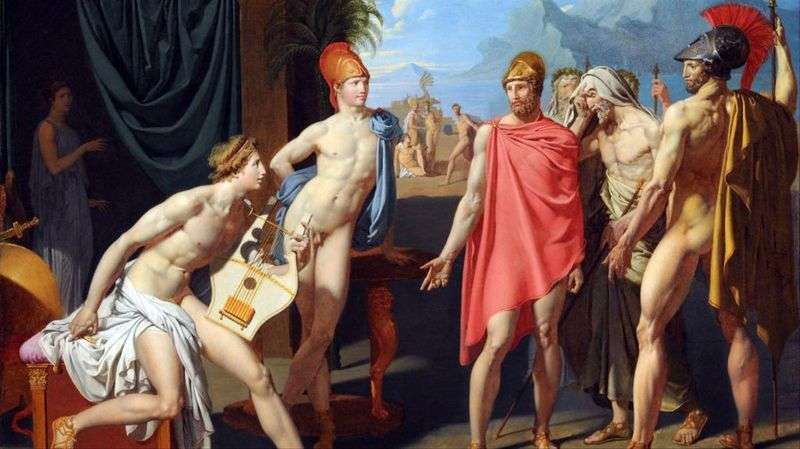 Ambassadors of Agamemnon in the tent of Achilles by Jean Auguste Dominique Ingres
Ambassadors of Agamemnon in the tent of Achilles by Jean Auguste Dominique Ingres